Hi there, pet lovers! 🐍
For reptile enthusiasts, the Gaboon Viper (Bitis gabonica) is a creature that inspires both awe and caution. Known for its striking appearance, massive size, and potent venom, this snake is a marvel of nature. However, it is not a pet for the faint-hearted or inexperienced. In this detailed review, we’ll explore everything you need to know about the Gaboon Viper, from its unique characteristics and care requirements to the risks and responsibilities of keeping one. Whether you’re considering owning one or simply curious about this enigmatic reptile, this guide will provide you with the information you need to make an informed decision.
Overview
The Gaboon Viper is one of the most visually stunning and dangerous snakes in the world. Native to the rainforests and savannas of sub-Saharan Africa, this snake is renowned for its cryptic camouflage, enormous size, and the longest fangs of any snake species. While its beauty and fascinating behavior make it a subject of admiration, its venomous nature and specific care requirements make it a challenging and high-risk pet.
Here’s a quick summary of what makes the Gaboon Viper stand out:
- Handling and Temperament: Extremely dangerous to handle; best observed from a distance.
- Care and Maintenance: Requires a carefully controlled environment with specific humidity and temperature conditions.
- Health and Durability: Hardy when cared for properly but sensitive to dehydration and improper handling.
- Availability: Relatively easy to find through breeders and expos, but not suitable for most keepers.
- Cost: Affordable to purchase but requires significant investment in secure enclosures and safety equipment.
Overall: The Gaboon Viper is a breathtaking snake that should only be kept by highly experienced and trained individuals. For the vast majority of reptile enthusiasts, it is best admired in zoos or through educational programs.
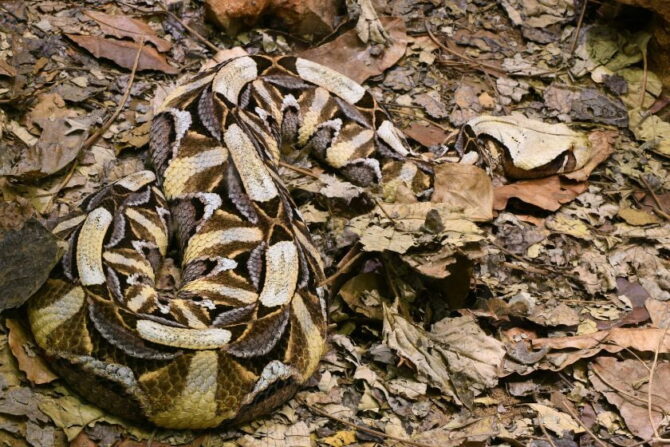
Why Choose a Gaboon Viper?
The Gaboon Viper is not a pet for everyone. Its appeal lies in its incredible beauty, unique behaviors, and the challenge it presents to experienced keepers. However, the risks associated with its venomous nature and the specialized care it requires make it unsuitable for most people. This snake is best suited for professional herpetologists, venomous snake experts, or those with extensive experience in handling dangerous reptiles.
For those who are prepared, the Gaboon Viper offers a fascinating glimpse into the world of venomous snakes. Its cryptic patterns, massive size, and ambush hunting tactics make it a captivating species to observe. However, the responsibility of keeping such a dangerous animal cannot be overstated.
Handling and Temperament
The Gaboon Viper is one of the most dangerous snakes to handle, and it should never be handled casually. Despite its generally calm and sedentary demeanor, this snake is capable of delivering a lightning-fast strike that can inject a large amount of venom. Its venom is highly toxic and can cause severe tissue damage, amputations, or even death.
Key Points About Handling
- Strike Speed: The Gaboon Viper has one of the fastest strikes in the snake world, making it nearly impossible to react in time.
- Venom Potency: Its venom is both hemotoxic and cytotoxic, causing massive tissue destruction and systemic effects.
- Temperament: While often calm and motionless, this behavior can be misleading. The snake’s docile appearance should not be mistaken for safety.
- Handling Tools: Professional tools such as snake hooks and tongs are essential for moving or managing the snake. Direct handling is strongly discouraged.
For these reasons, the Gaboon Viper is not a hands-on pet. It is best observed through the safety of a secure enclosure.
Care and Maintenance
Caring for a Gaboon Viper requires a high level of expertise and attention to detail. These snakes have specific environmental and dietary needs that must be met to ensure their health and well-being.
Enclosure Setup
- Size: A 40-gallon enclosure is suitable for an adult Gaboon Viper, but larger is always better.
- Substrate: Use moisture-retaining substrates like cypress mulch or coconut fiber to maintain humidity.
- Climbing and Hiding: Provide branches, foliage, and hiding spots to mimic their natural habitat.
- Security: The enclosure must be escape-proof and equipped with secure locks.
Humidity and Temperature
- Humidity: Maintain humidity levels between 60-80%. Regular misting is necessary to keep the environment moist.
- Temperature: Keep the enclosure at 75-85°F, with a basking spot of around 88°F. Avoid overheating, as these snakes are sensitive to high temperatures.
Feeding
- Diet: Gaboon Vipers primarily eat rodents, such as mice or rats. Pre-killed or thawed prey is recommended to avoid injury to the snake.
- Hydration: These snakes can be prone to dehydration. Injecting water into their prey or providing shallow soaking sessions can help maintain hydration.
Lighting
Gaboon Vipers do not require UVB lighting, but providing a natural day-night cycle can benefit their overall health.
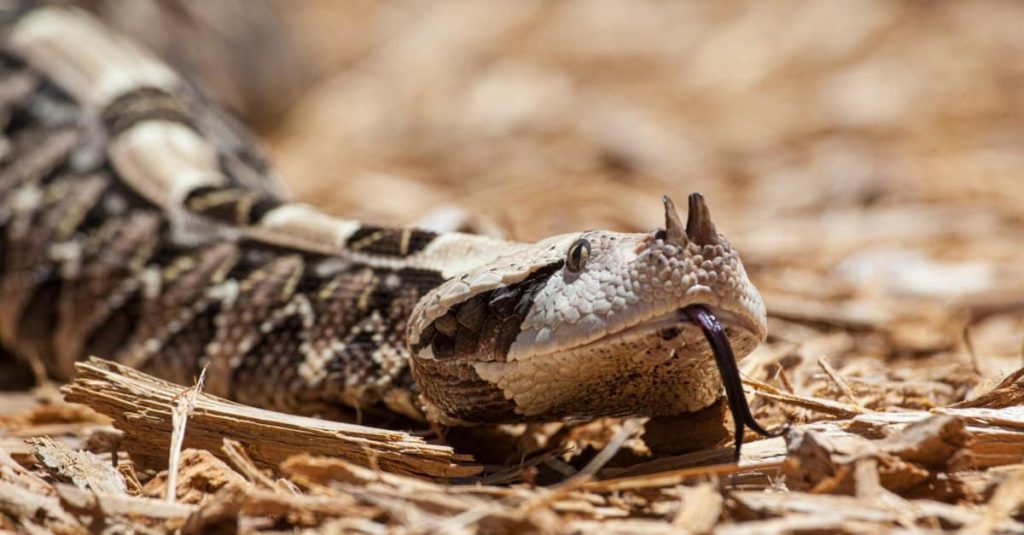
Health and Durability
When properly cared for, Gaboon Vipers are hardy and long-lived snakes, with lifespans of up to 20 years in captivity. However, they are sensitive to environmental changes and require consistent care to thrive.
Common Health Issues
- Dehydration: A lack of proper hydration can lead to serious health problems.
- Respiratory Infections: Caused by excessive humidity or poor ventilation.
- Obesity: Overfeeding can lead to obesity, which is detrimental to their health.
Preventative Care
- Maintain proper humidity and temperature levels.
- Provide a balanced diet and avoid overfeeding.
- Handle the snake only when absolutely necessary, and always use professional tools.
Availability and Cost
Gaboon Vipers are relatively easy to find through specialized breeders and reptile expos. However, their availability does not make them suitable for most keepers.
Where to Buy
- Breeders: Reputable breeders are the best source for healthy, captive-bred Gaboon Vipers.
- Reptile Expos: These events often feature Gaboon Vipers, but buyers should exercise caution and ensure they are prepared for the responsibility.
Cost
- Initial Purchase: Prices range from $150 to $300 for standard morphs, with rare morphs costing significantly more.
- Setup Costs: A secure enclosure, heating equipment, and safety tools can cost several hundred dollars.
Pros and Cons
Pros
- Stunning appearance with intricate patterns and massive size.
- Fascinating behaviors, such as ambush hunting and cryptic camouflage.
- Relatively low-maintenance compared to other venomous snakes.
Cons
- Extremely dangerous due to its venomous bite.
- Requires specialized care and a secure enclosure.
- Not suitable for beginners or casual reptile keepers.
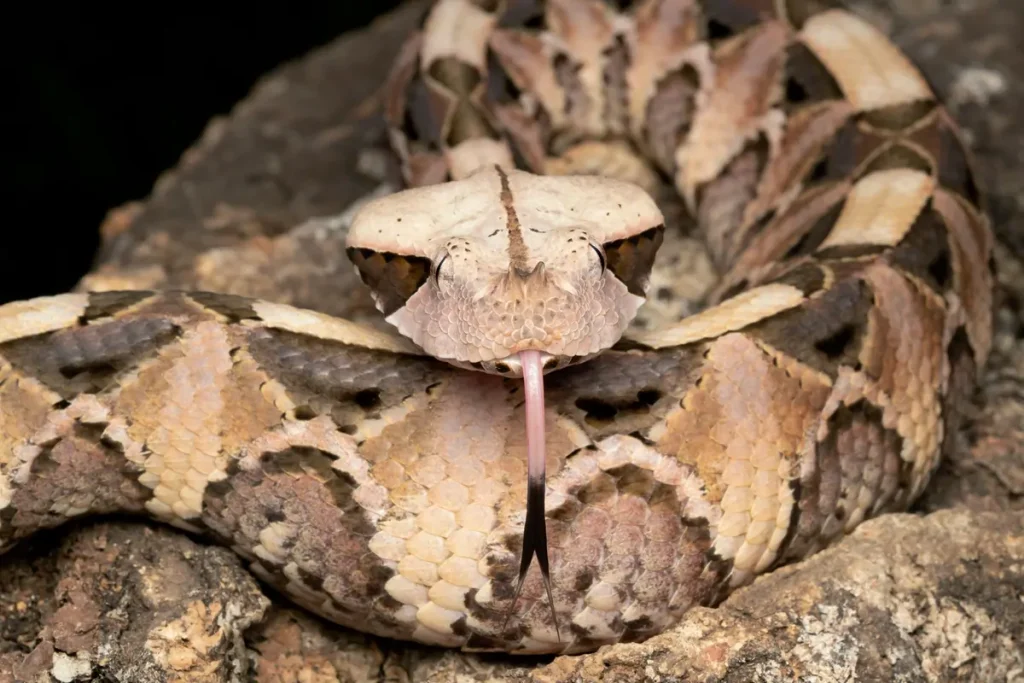
Final Thoughts
The Gaboon Viper is a truly remarkable snake that captivates with its beauty and unique characteristics. However, it is also one of the most dangerous reptiles to keep, requiring a high level of expertise, responsibility, and respect. For the vast majority of reptile enthusiasts, this snake is best admired in controlled environments such as zoos or educational facilities.
If you are an experienced keeper with the necessary skills and resources, the Gaboon Viper can be a rewarding species to care for. However, for everyone else, we strongly recommend enjoying these incredible snakes from a safe distance.
Have you encountered a Gaboon Viper before? Share your thoughts and experiences in the comments below!
For more reptile care tips and reviews, stay tuned to our blog and subscribe to our newsletter. 🐍

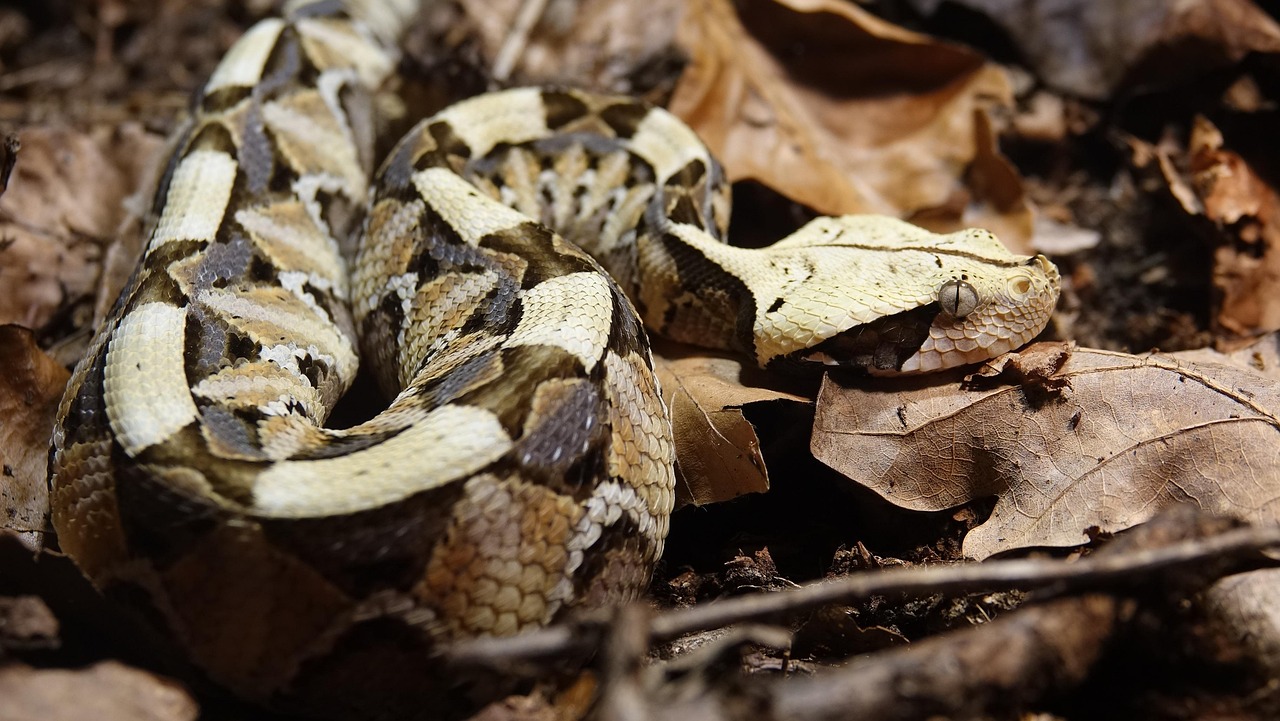

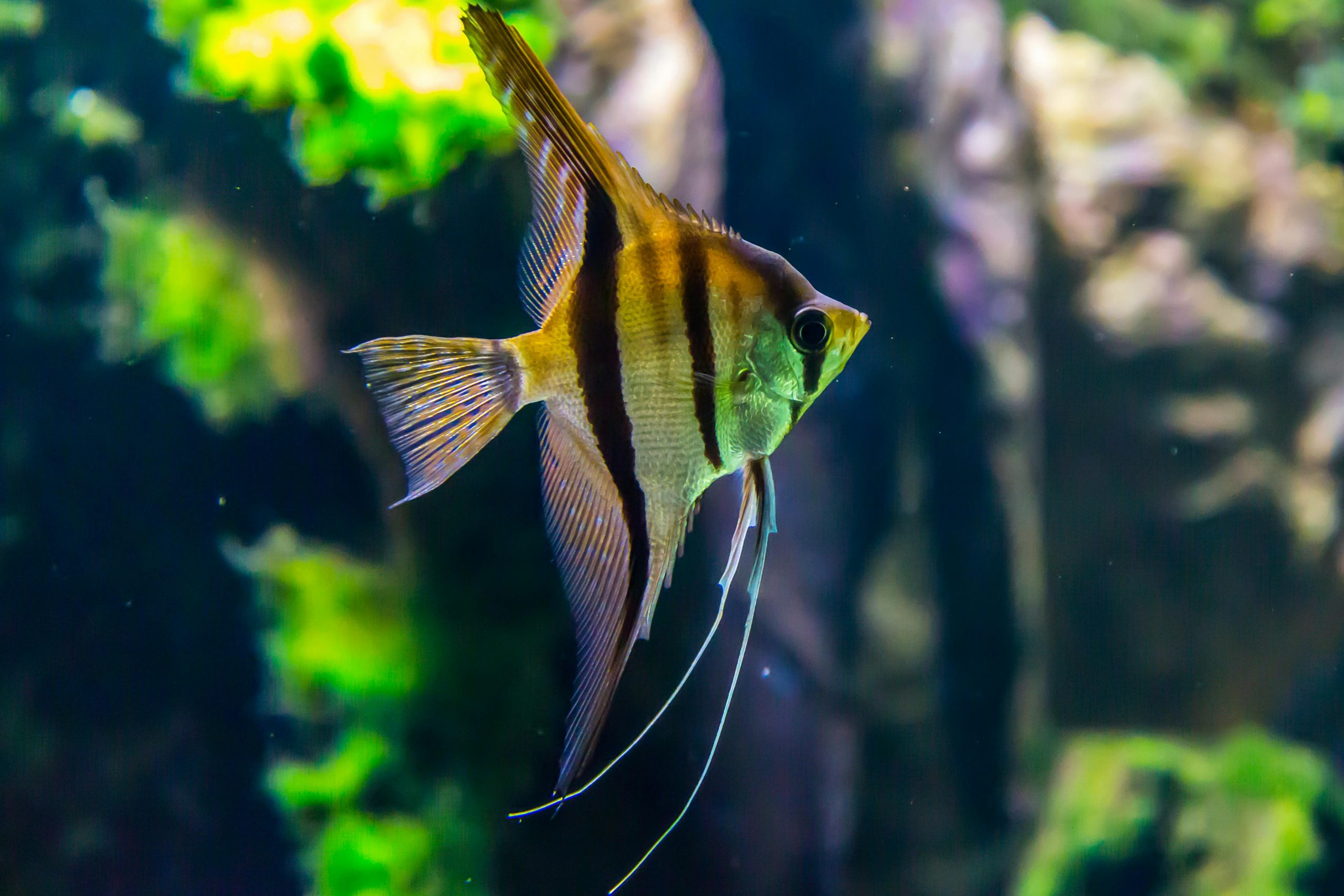
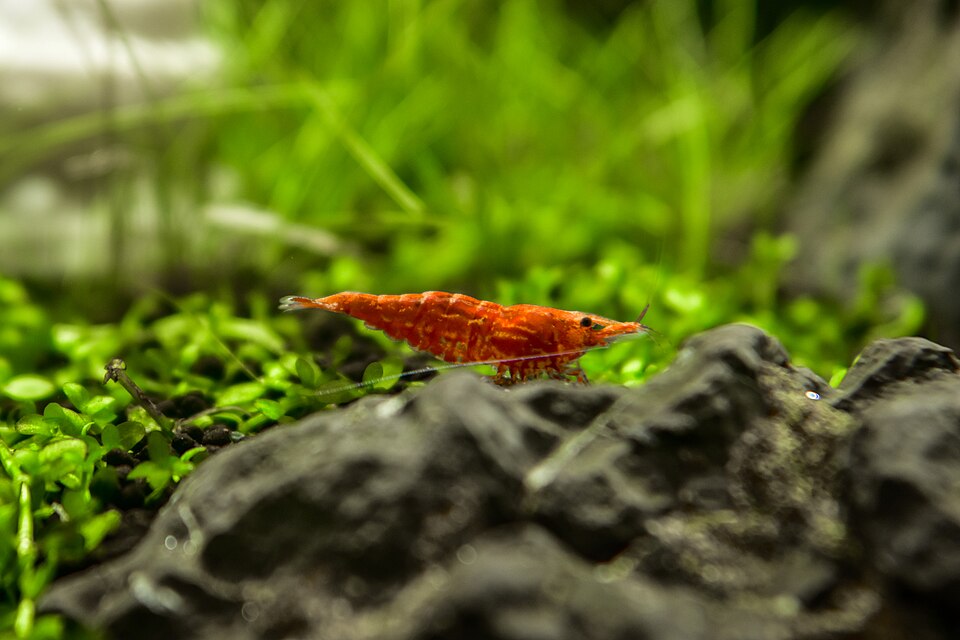

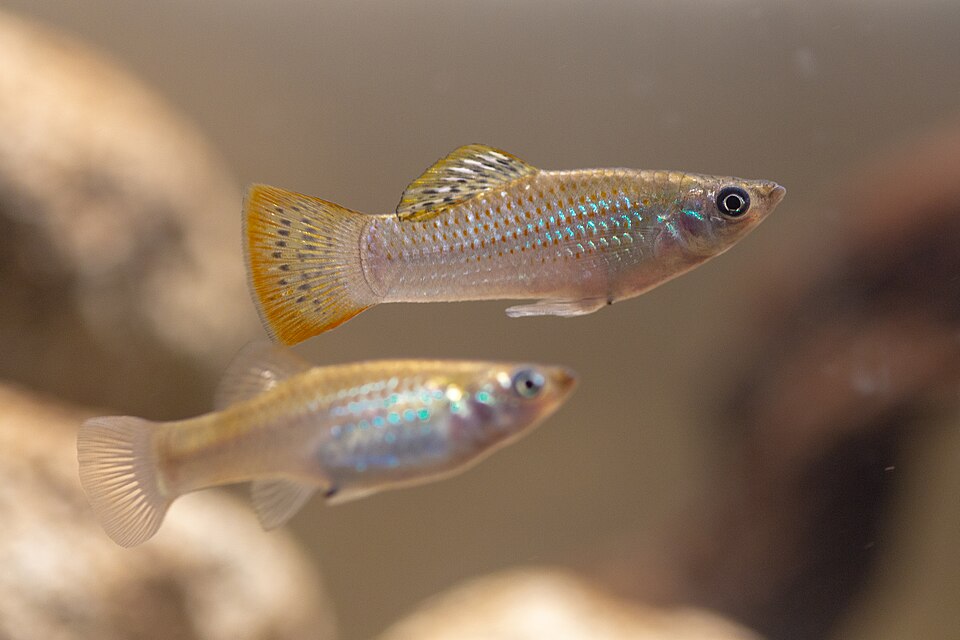
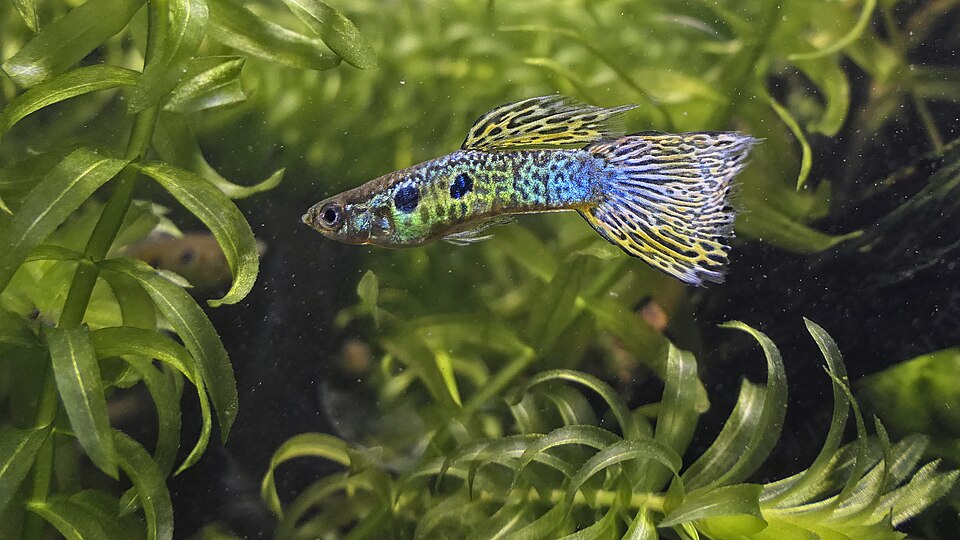
Leave a Reply